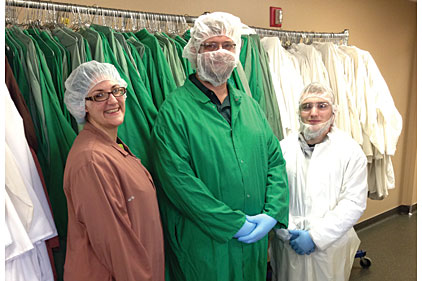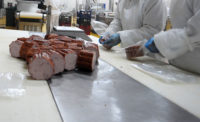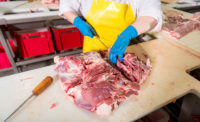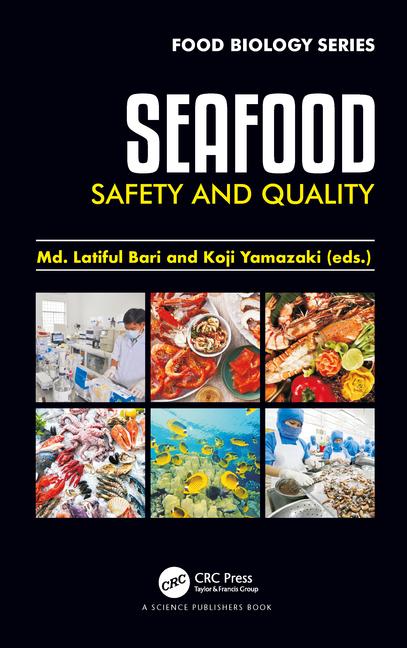 Something as simple as improper care, cleaning and handling of uniforms and garments can lead to product contamination by introducing a microbial or foreign material risk to product. Not to be taken lightly, proper apparel care has become a part of many processors’ culture.
Something as simple as improper care, cleaning and handling of uniforms and garments can lead to product contamination by introducing a microbial or foreign material risk to product. Not to be taken lightly, proper apparel care has become a part of many processors’ culture.
First and foremost, processors need to guarantee they are getting a clean garment for an employee that is going to be handling the food. New requirements for personal protective equipment (PPE) and garments in ready-to-eat (RTE) areas require that suppliers who launder garments to have some type of plan with regard to ensuring their garments are cleaned to an adequate level every day. That might mean some laundering venders have HACCP plans or elaborate procedures to certify that their clothing is cleaned properly, says Lee Johnson, vice president of technical services for West Liberty Foods, West Liberty, Iowa.
Proper cleaning includes validating that garments are cleaned using the correct chemicals, rinsed in fresh water, heated to the appropriate temperature and dried promptly to prevent mildew and bacterial growth.
“The thought process is, we’ve [donning] clean garments to start the day, because, believe it or not, that’s not always the case if you’ve got guys coming in from the outside with cats and dogs and all the other stuff,” Johnson says. “At least we know we have a clean garment that’s laundered daily, and we’re ensured of that.”
In addition to a validated wash process that is specially formulated to address decontamination, soil, and microbial removal from food-processing garments, damaged and deteriorating uniforms, aprons and garments should not be used, says Dionicia Webster, food safety manager at Cooper Farms, Van Wert, Ohio.
“Garments that may be cleaned for reuse need to be washed properly in order to remove not only soils but to eliminate microbial concerns,” she says. “Garments that are excessively worn may begin to break down and shed into product.”
Uniforms, aprons and garments should be clean at the beginning of each shift and changed regularly when necessary. Uniforms also must not allow for skin exposure. Additionally, uniforms and aprons should not be worn outside the food-preparation area.
Handling clean garments according to product risk is also important. Clean uniforms and PPE should be stored in a manner to prevent cross-contamination, Webster says.
“Garments used for raw production, or in shipping and maintenance areas should not be stored or come into contact with garments that are used in final packaging,” she explains.
Color coordination
In addition to cleanliness of garments, one of the greatest contributors to having a successful apparel program is designation and color-coding of uniforms to prevent cross-contamination.
“I like to be able to look into an operations environment and be able to clearly tell what people are doing and whether they are supposed to be in there,” Johnson says. “By having colored garments and specifically identified garments for specific areas, it’s very clear that all these people are at least supposed to be in that room, or at least they are wearing the right apparel. I know that they haven’t been moving to areas [restricted to them]. It’s a clear, easy management tool to control effectively what’s going on with the people flow and practices in the manufacturing environment.”
Color-coded uniforms are monitored in Cooper Farms’ standard operating procedure (SOP) program. At Cooper Farms, smocks are color-coded for the raw and RTE side of the plant, and on each side of the plant, designated areas and job functions are given a specific color.
“We have quality service technicians in every department that are also monitoring to make sure people do remain in their designated areas,” Webster says. “The team members are very aware of it, and they police themselves.”
“The color-coding is huge,” adds Greg Cooper, Cooper Farms’ plant manager. “Being a RTE plant, we’re at risk of cross-contamination after the product is cooked. Making sure employees follow all the GMPs and knowing that people in green shouldn’t be up front and certainly shouldn’t be touching product is a huge thing.”
Garbing training
Training is very important in order to reduce the risk of product contamination.
“At Cooper Farms, gowning instructions are documented in the SOPs for each area and are posted in several locations in the dressing areas,” Webster says. “To assume that an employee would instinctively know how to dress for the production floor would increase risk of product contamination.”
Johnson agrees that companies need to ensure employees are following procedures. Training is needed on how to wear and use, where to wear the apparel and even put it on.
“If you are dragging the sleeves on the ground, that’s not doing a very good job on how you are putting it on,” Johnson explains. “Training on proper garbing is important.”







Report Abusive Comment